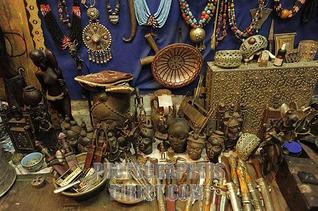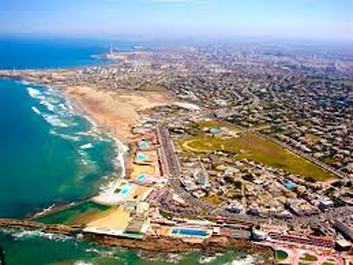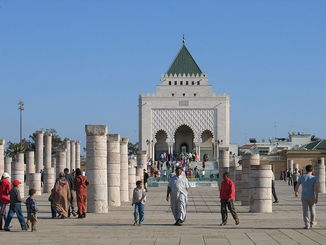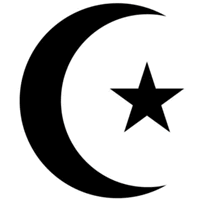Background Information
Morocco is a country located on the northern corner of Africa, bordered by Algeria, Western Sahara, and Mauritania. Morocco has the Atlantic Ocean to its west and the Mediterranean Sea to its northeast. The country's capital is Rabat. The ethnicity of Morocco is mainly Arab-Berber and the majority religion is Muslim. Arabic is the official language of Morocco but the Berber language is also spoken by many of the Moroccan people. The people of Morocco are mostly agricultural and a lot of people settle in the cities on the coast (Morocco, CIA). Popular cities in Morocco include Marrakech, Casablanca, Fez, Agadir, and Tangier. Marrakech is known as the "Pearl of the South" and has red buildings and city walls. The town square of Marrakech is very well-known. Casablanca is a beautiful and largest city on the western coast of Morocco. In Spanish, "White House" is what Casablanca is translated into. Casablanca was made after the French city, Marseilles, around the 1920s. Casablanca has become a very industrialized city and is a major business capital in Morocco. In addition, Casablanca is located on land with many natural resources available. Today, Casablanca is very similar to any European city (Morocco,
Africa, Maroc.costasur.com; Casablanca, Marokko-info.nl).
Morocco has a long history, that goes back over many centuries, starting off with the Berbers. Morocco has been inhabited by the Berbers since the end of the second millennium B.C, according to artifacts. Morocco was apart of the Roman Empire. When the Roman Empire fell, Morocco was first taken over by the Vandals and then invaded by the Arabs. The Arab control helped spread the Islamic religion that has survived in Moroccan culture and is now widely practiced in Morocco. In addition, the Arab control brought a new language and government system. A lot of Moroccan culture has stayed with the Moroccans throughout history. After the Arabs took over Morocco, there were lines of Berber dynasties that ruled Morocco, like the Alauoite Dynasty and the Almoravid Dynasty (History of Morocco to the Present Day, Moroccansands.com; MOROCCO, Worldatlas.com).
Today Morocco is an independent country, but in the 20th century it fell under control of Europeans, like many other countries in Africa had. Although Morocco, is located closely to Europe, its high mountains were able to serve as a barrier. The mountains in Morocco were beneficial in protecting the country from the Europeans until 1912. In the 15th century, both Portugal and Spain began getting involved with Morocco but Morocco was able to prevent them from taking over. Morocco was finally colonized by France and Spain from 1912 until March, 1956. Morocco was divided into Spanish and French Protectorates. Through nationalist movements Morocco was able to regain its independence. However, the influence from the colonization by Spain and France is still seen in present-day Morocco (History of Morocco to the Present Day, Moroccansands.com; MOROCCO, Worldatlas.com)
Africa, Maroc.costasur.com; Casablanca, Marokko-info.nl).
Morocco has a long history, that goes back over many centuries, starting off with the Berbers. Morocco has been inhabited by the Berbers since the end of the second millennium B.C, according to artifacts. Morocco was apart of the Roman Empire. When the Roman Empire fell, Morocco was first taken over by the Vandals and then invaded by the Arabs. The Arab control helped spread the Islamic religion that has survived in Moroccan culture and is now widely practiced in Morocco. In addition, the Arab control brought a new language and government system. A lot of Moroccan culture has stayed with the Moroccans throughout history. After the Arabs took over Morocco, there were lines of Berber dynasties that ruled Morocco, like the Alauoite Dynasty and the Almoravid Dynasty (History of Morocco to the Present Day, Moroccansands.com; MOROCCO, Worldatlas.com).
Today Morocco is an independent country, but in the 20th century it fell under control of Europeans, like many other countries in Africa had. Although Morocco, is located closely to Europe, its high mountains were able to serve as a barrier. The mountains in Morocco were beneficial in protecting the country from the Europeans until 1912. In the 15th century, both Portugal and Spain began getting involved with Morocco but Morocco was able to prevent them from taking over. Morocco was finally colonized by France and Spain from 1912 until March, 1956. Morocco was divided into Spanish and French Protectorates. Through nationalist movements Morocco was able to regain its independence. However, the influence from the colonization by Spain and France is still seen in present-day Morocco (History of Morocco to the Present Day, Moroccansands.com; MOROCCO, Worldatlas.com)





